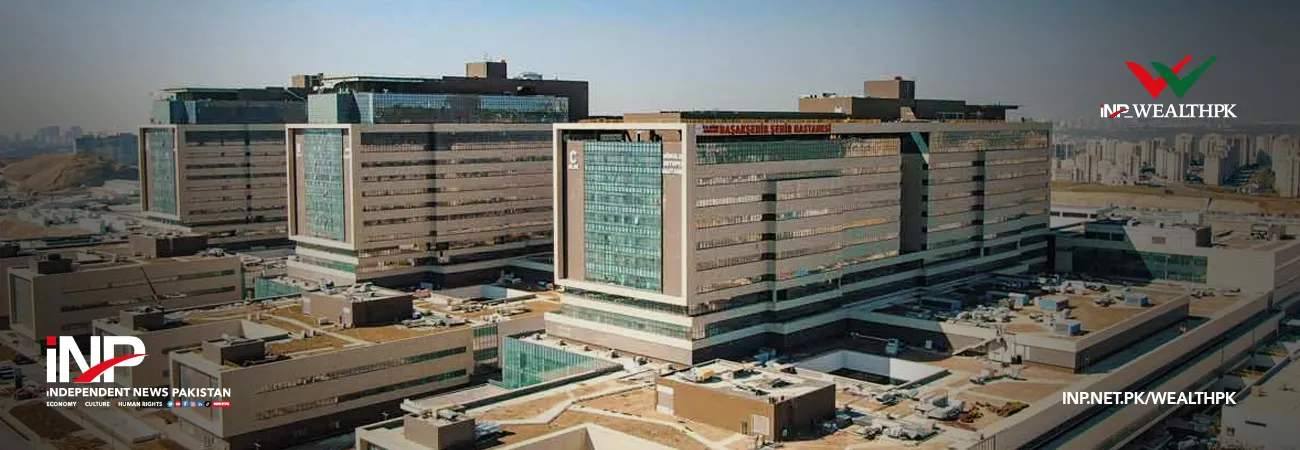INP-WealthPk
By Hamid Mahmood
ISLAMABAD, Feb. 17 (INP-WealthPK): Pakistan has the potential to become a centre of economic activity in Asia if it implements the model of the Economic Corridor Development (ECD) presented by the Asian Development Bank (ADB) on February 2, 2022.

Source: ADB; Economic Corridor Development Framework
To achieve structural transformation, the ADB suggests horizontal and vertical interventions. The horizontal intervention entails strengthening the business environment's regulatory framework, expanding infrastructure investments, and improving market access and compliance. Encouraging innovation and entrepreneurship for industry divergence, promoting links among private sector participants, and enhancing value addition via human capital development are examples of vertical interventions. By transforming the China-Pakistan Economic Corridor (CPEC) into a global endeavour, Pakistan can better utilise the transportation infrastructure created under the CPEC to optimize investment returns. The initial phase in Pakistan's Economic Corridor Development (ECD) is to determine which transportation corridors are required. The ADB has selected four pilot routes for implementing ECD: (i) M4 Motorway (ii) N70 National Highway (iii) N50 National Highway and (iv) E35 Expressway. These transportation routes offer the potential for increased size and diversity in the economy. The government must invest in public infrastructure to realize that promise. Another significant policy intervention is to improve trade facilitation processes by harmonising customs procedures and transit laws to ensure that freight traffic flows smoothly on both domestic and international routes. The government may explore establishing special economic zones (SEZs) along transportation corridors to help build economic corridors. Local endowments, such as labour skill mix, raw material availability, local market circumstances, and access to services like electricity, water, and sewerage in industrial estates, should all be taken into account. The government must also create a regulatory framework that provides adequate financial and other incentives for enterprises to operate in these SEZs. Rather than favouring one sector over another, this strategy proposes a methodical procedure for identifying the barriers to private-sector development. Rather than supporting one sector at the expense of another, the government should devise policies to eliminate obstacles and fix market failures. Pakistan will need to develop a master plan for the specified transportation corridors. The plan should be based on an analysis in order to identify infrastructure flaws. Second, policy recommendations should be provided for synchronising institutional and regulatory frameworks, and third, internal and external resources, as well as private sector investments, should be mobilised. SEZs might be a powerful tool for attracting domestic and foreign investment, especially if institutional, regulatory and infrastructure barriers are removed. SEZs can help boost export-oriented industries, resulting in more jobs and better living conditions. SEZs have two structural characteristics: They are often located within designated zones within national borders; they are legal zones with more liberal and administratively efficient investment, trade and operation rules than those elsewhere in the country. The development of certain government offices is also required for SEZ governance. SEZs can grow into economic corridors if they are successful. However, before establishing SEZs, the government must recognise and resolve the underlaying problems. First, without an overall development strategy, SEZs are prone to mushrooming expansion. Second, SEZs must have clear objectives. Third, without a vision and goal, there is no way to measure how successful they are. Fourth, while worker productivity is important for company success, some SEZ enterprises are solely interested in inexpensive labour. Fifth, SEZs compete for arable land that might be used for other purposes. As a result, the building and implementation of SEZs must be properly planned by the government. Sixth, there is frequently a lack of a regional plan. Multinational corporations often perform research and development in their home nations, with minimal technology transfer occurring in special economic zones. The ADB recommends that the Pakistan government focus on enhancing trade facilitation, lowering the regulatory system, and raising transparency to ensure a seamless transition from SEZs to economic corridors. Furthermore, a better business climate would lower both direct and indirect transaction costs. With strong leadership and dedication, the government should build a uniform and transparent SEZ regulatory framework. A special economic zone should be considered as part of a national or regional development plan.












